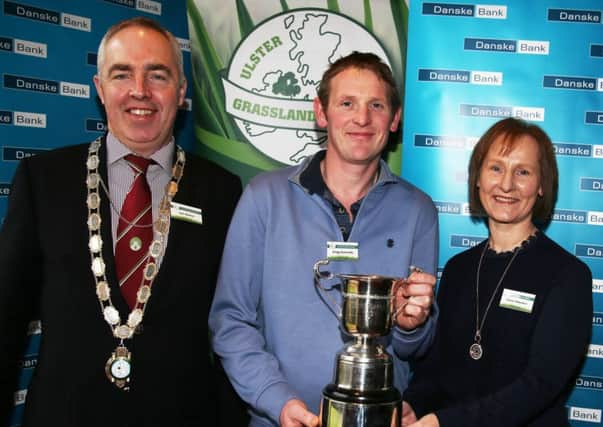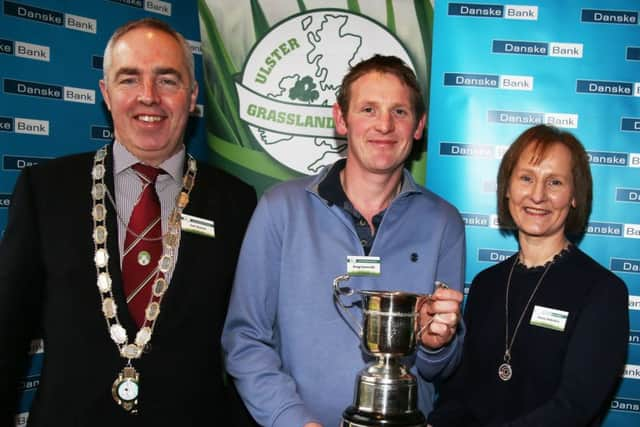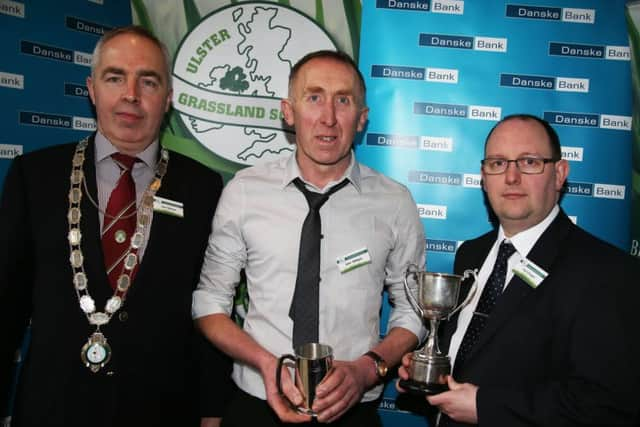Investing in grassland produces returns


A large crowd benefitted from the research and experience of the speakers who had a clear message that investing in grassland pays dividends.
Newly elected UGS president Sam Watson set the scene by highlighting the importance of a healthy soil, with correct nutrient status, to growing more grass.
Advertisement
Hide AdAdvertisement
Hide AdTo benefit from this, Sam stressed that farmers must make excellent silage with good feed out practices to drive efficiency within their systems.


Technologies to improve silage digestion should also allow producers to make more cash from grass.
Mike Powley, Elm House Farm in Yorkshire and former UK Beef Farmer of the Year spoke of turning sunshine into cash via grass and livestock.
Mike and his father run just over 100 suckler cows in a traditional spring calving system with bulls finished on cereals and heifers fed/finished on forage.
Advertisement
Hide AdAdvertisement
Hide AdThe farm also grows cereals and protein crops to feed the cattle and reduce costs. The cattle are rotationally grazed in large groups with 5-6 grazings per season.


A South Devon x Limousin cow is used which is extremely docile, fertile with good mothering ability and heifers calf in at two years of age.
AI is used with a top 10% EBV British Blue bull and sexed semen is used to breed replacements.
Mike is involved with Asda as one of their training farms and has been trialling the use of the Heattime detection system in suckler cows at grass.
Advertisement
Hide AdAdvertisement
Hide AdHe told conference delegates: “Positioning of the receiver was the most important issue and we now have it on a trailer with it’s own battery pack and move it from field to field with the cows. I now have the confidence to AI based solely on the cow movement changes that it monitors.”


The issue of profit drivers was also stressed by Mike who stated that by increasing DLWG by just 0.1 kg/day over an animal’s lifetime of 409 days, an additional £94 of output can be obtained.
The work at Ballyhaise Agricultural College on spring grazing dairy cows was summarised by Donal Patton.
Teagasc have estimated that each extra day at grass is worth €2.70/cow/day and he emphasised the importance of early grazing management to set the farm up for the remainder of the year.
Advertisement
Hide AdAdvertisement
Hide AdIn recent years Ballyhaise cows have been grazing on 40 occasions out of a possible 60 from February to March, with a system based on a three hour grazing period after each milking with cows housed in between.


Donal stated that farmers need to be flexible in wet weather and give cows a smaller grazing area and then bring them in – cows do less poaching when grazing than walking.
His take home message was that the grazing infrastructure should be invested in, with capital borrowed if need be due to the resulting higher return.
Farmers should also update their skills on grass allocation and management and have a plan going forward each year which should be stuck to and reviewed for the following year.
Advertisement
Hide AdAdvertisement
Hide AdThe presentation by Dr Laurence Shaloo, senior researcher at Moorepark, focused on return on capital for investing and stated that Teagasc work demonstrates a very strong relationship between farm profit and quantity of grass grown.
A recent study showed that 1,400 kgDM/ha less grass was grown between the top and bottom 25% of Irish farms.
A modelling exercise looking at investing in dairy herd expansion indicated that those investments involving soil fertility and grazing infrastructure had the highest return on capital.
When questioned on the impact of the cost of leasing land to fund expansion he stated that what the land was used for was the more important issue.
Advertisement
Hide AdAdvertisement
Hide AdIn summary Laurence highlighted that there is significant opportunity for farmers to improve returns on capital and that the correct strategies should be adopted.
Expansion should only be considered when accompanied by an increase in grass growth.
The final speaker was Conail Keown from CAFRE who is the Adviser for the IFJ Dairylink Project.
Conail outlined the project’s aim of “Best use of farm resources to drive profit” and how the six producers involved prepare physical and financial plans resulting in road map to profit.
Advertisement
Hide AdAdvertisement
Hide AdA holistic farm approach is taken focusing on the areas of profitability and cash management, capital development, herd fertility/health and forage management.
All farms engaged with cashflow budgeting which flagged up potential areas resulting in targeting certain areas of cost control.
Winners of the 2016 Grassland Farmer of the Year and various category winners were also announced and the UGS is indebted to Danske Bank for the continued significant financial support for the society’s competition. Reggie Lilburn, Dromore won the Grassland Farmer of the Year with Roger and Hilary Bell, Kells and John and Joe Milligan, Castlewellan runners up.